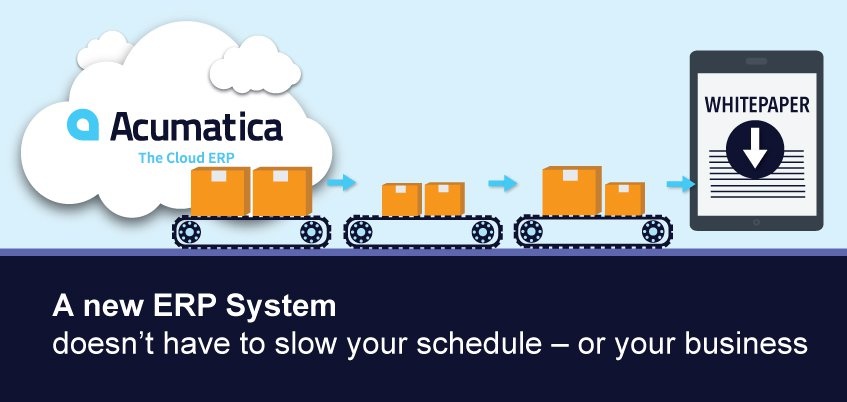Manufacturing Job Costing KPI’s Help You Meet Your Targets
Manufacturers know the key to profitability is keeping a close eye on job costing. Key Performance Indicators (KPI’s) are a measurement tool that manufacturing job costing businesses can use to meet their target goals by looking at the data month to month, quarter to quarter, year over year and everything in between. KPI’s are used in all different industries to meet any performance goals. They have an astounding capacity in the manufacturing industry to help with job costing. Read about what other manufacturers are doing to monitor job costing and what KPI’s are helpful for manufacturing companies. This white paper will give insight and examples into different types of KPI’s and help you consider out-of-the-box versus custom KPI’s.

5 Tips to Help Manufacturing Job Costing Companies Get Started with KPI’s
-
- Look at the critical numbers – KPI’s enable manufacturing businesses to look at the critical numbers. When it comes to monitoring job costing, the first step is to carefully identify the targets and the corresponding source transaction data. Evaluate the historical trends of your KPI’s and set the targets you are trying to hit. Understand the corresponding factors that affect how to achieve those numbers, then simply closely monitor the data and report on the progress.
- Reevaluate the measurements regularly – KPI’s should change as the business evolves. If the business automates a production step, then the KPI’s should be adjusted to measure the productivity of the equipment, not the labor. Predictive KPI’s use leading indicators to project future performance and are based on economic indicators, such as the price of raw materials or exchange rates or shipping costs. When it comes to job costing, many of the indicators are constantly changing based on the industry and economic climate. This is one key benefit to using a cloud-based system which offers the capacity needed to capture data from online data sources to provide up-to-date accuracy for costs and demands.
- Consider your ERP systems’ reporting features – most modern ERP systems have advanced reporting capabilities so that should be the first place you should look to create your KPI’s. One advantage, besides the fact that you already have a license for it, is that the underlying data should be available for users to drill into to better understand KPI’s that raise questions. Another might be that you can create reports and pivot tables that support additional analysis of trends you spot with your KPI’s.
- Make sure everybody is on board – Tracking job costing can be a complicated endeavor crossing over multiple departments. To ensure the right data is being collected, involve all the key players in the process of identifying key measurements. You may find that the team will come up with additional KPI’s that can be monitored to improve business performance. Train your team in how to read the KPI’s and what they mean. It is important that all users understand the system and what measurements are indicating. This is key to having an effective dashboard.
- Job costing is the focus – To make the most of KPI’s, it is important to have just the right amount of data. No one should have to weed through mountains of data to understand how job costing is going. The “Goldilocks principle” applies here. This is where you want to find a measurement that’s “not too hot and not too cold.” KPI’s could be different based on the role or industry. Start with 8 -10 KPI’s and you can adjust accordingly as you and your team become more familiar with the information. There are virtually no limits when it comes to defining and measuring the data. It’s crucial to focus on only what is needed. If the target is to minimize cost and increase efficiency for job costing, the same thinking should apply for the monitoring of this data.
Click the image below for this free 10-page manufacturing job cost KPI’s whitepaper.
In this white paper, you will learn about how manufacturing software uses Business Intelligence (BI) to create KPI dashboards both for mobile and desktop platforms, with specific examples of KPI reporting to understand and inspire how to take advantage of this great tool for your own business.
The Acumatica Manufacturing Edition integrates with the Customer, Inventory, Order Management, eCommerce, Financial, Project and Service Management Suites. Our experienced manufacturing and ERP systems consultants can help you adopt a successful strategy for growth. We’ll help you deploy a modern ERP for the manufacturing industry.
Let us help you discover if the Acumatica Manufacturing Edition is a good fit for your growing business!
Stratotech Partners, LLC. is an Acumatica Gold Certified Partner, headquartered in Seattle, Washington, serving Acumatica customers in the Seattle metropolitan area and Pacific Northwest region. The Partners at Stratotech, Art Olsen and John Nicholson, are ERP industry veterans with an honorable reputation among their peers. Stratotech’s expertise allows them to focus on small to mid-sized manufacturing companies who are outgrowing existing systems and looking for lower-cost cloud-based alternatives. Highlighted solutions offered by Stratotech are the Acumatica Manufacturing Edition and Smartsheet, the leading cloud platform for collaboration and project management.
For more information, please visit our website, call 206-336-9197 or email us.

Whitepaper provided by Acumatica.
